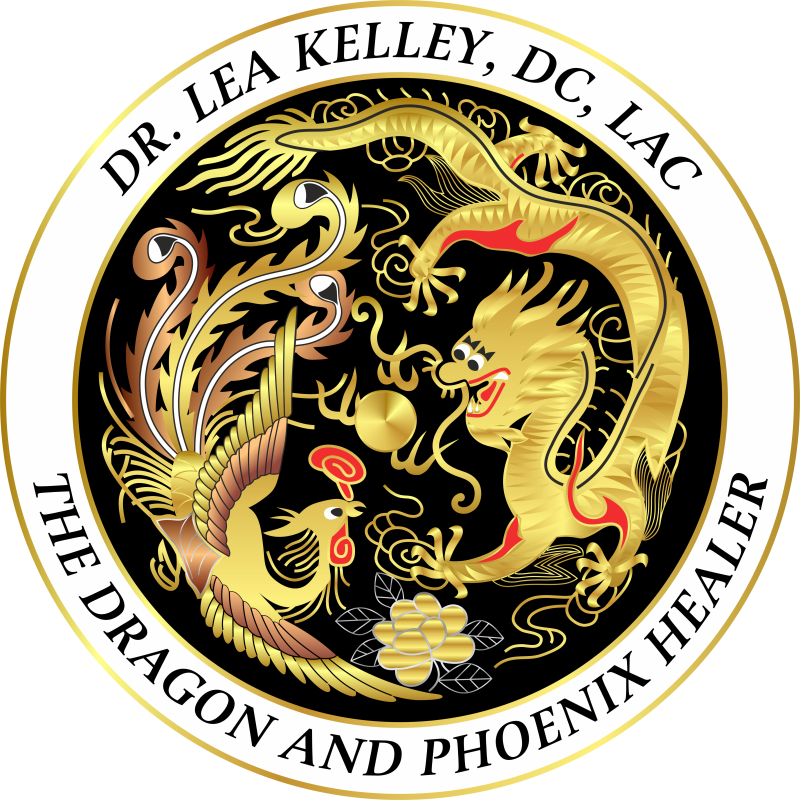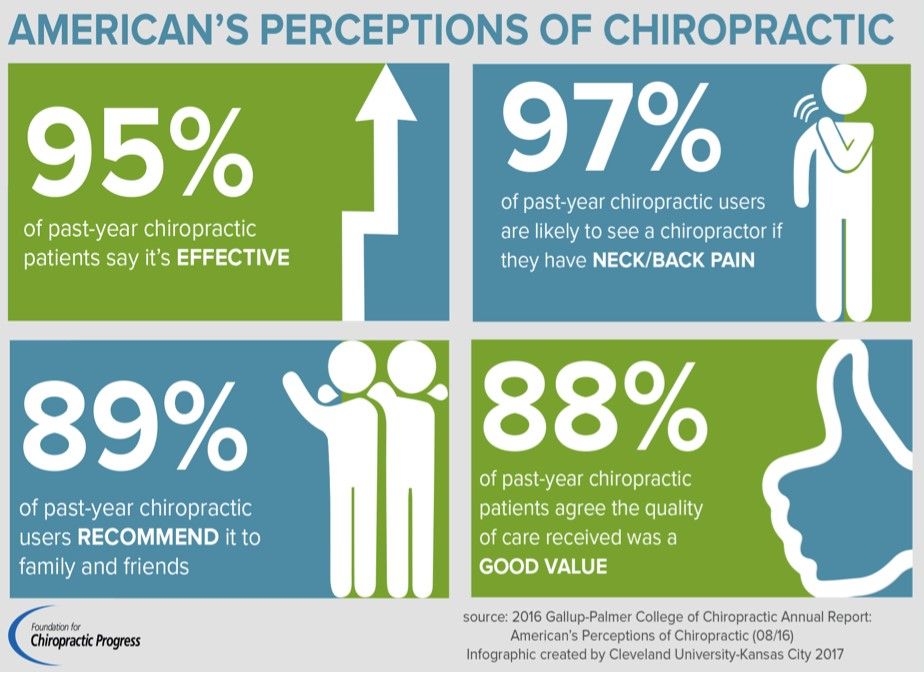
Chiropractic
Chiropractic: Healing with a Human Touch

Doctors of chiropractic (DCs) are primary health care professionals focused on diagnosis, care and prevention of disorders of the spine as well as other parts of the musculoskeletal system*, and the associated effects on the neurological system. Chiropractic services are used most often to care for neuro-musculoskeletal complaints**, including but not limited to back pain, neck pain, pain in the joints of the arms or legs, and headaches. These disorders impact 44.6 million Americans annually, with an estimated cost to society of $267.2 billion2, and are increasingly the result of poor posture, workplace and sports-related injuries, motor vehicle accidents or simply sedentary lifestyles.
The Chiropractic Perspective and Practice
The relationship between structure--primarily the spine and musculoskeletal system--and function--as coordinated by the nervous system--is central to chiropractic’s approach to patient care, health and well-being.
Doctors of chiropractic acknowledge the importance of the nervous system in the control, coordination and regulation of the body, and that spinal or extremity joint dysfunction, termed subluxation* or subluxation complex, can adversely affect nerve function,16 and the body’s ability to regulate and maintain health.17 The core purpose of chiropractic practice and procedure is to address disturbed joint biomechanics and the associated effects on nerve system function. This is achieved through the skilled procedure termed the spinal adjustment or manipulation.
Chiropractic is an inherently conservative approach to health care, and the profession values the intrinsic biologic ability or innate tendency of the body to self-regulate, restore and maintain health through compensating homeostatic mechanisms, reparative processes and adaptive responses to environmental challenges. The chiropractic paradigm represents a holistic biopsychosocial** philosophy of health rather than a biomedical one, and embraces a belief in optimizing health through good nutrition, constructive exercise, stress management, and a focus on the importance of good posture, as well as proper spinal and extremity joint biomechanics.
Chiropractic patient management includes manual techniques with particular competency in joint adjustment and/or manipulation, rehabilitation exercises, patient education in lifestyle and nutritional modification, and the use of adjunctive therapeutic modalities, orthotics and other supports. Current accreditation and state licensing standards in the United States give doctors of chiropractic the responsibility as a primary portal of entry provider, with the requirement to establish a diagnosis, determine indications for providing chiropractic care, and to consult with or refer to other health care practitioners when appropriate.
The First Visit to the Chiropractor: What to Expect
The doctor of chiropractic starts by taking a patient’s history, and then performs a physical examination, to include the assessment of spinal and musculoskeletal joint function. The chiropractic examination focuses on evaluation of joint pain or tenderness, asymmetry, changes in range of joint motion, muscle tone and strength, posture and spinal or other joint stability. Lab tests or imaging such as MRI, CT scan or X-ray may be indicated.
The combination of the history, examination, and diagnostic studies help determine whether chiropractic services are appropriate for the patient’s condition. As part of this process, the doctor will explain the clinical findings, recommend a treatment plan and review the risks and benefits of all procedures.
Through a process of shared decision-making, the patient and doctor will determine if it is appropriate to proceed with a short trial of chiropractic services. If the examination findings indicate that the patient would be more appropriately managed or co-managed by another health care professional, the chiropractor would make the proper referral.
Based on the clinical indications, timing or severity of the patient’s condition, chiropractic interventions may require a series of visits in order to relieve pain and improve joint function. Patients may also receive advice on home care, lifestyle modifications, exercise instruction and nutritional advice.
The Chiropractic Adjustment
Doctors of chiropractic are extensively educated in the assessment and management of conditions affecting the spinal and extremity joints and associated neurology, and based on examination findings and indication for care, the chiropractor will recommend a short course of care to help relieve pain and improve function.
Chiropractic care involves spinal adjustment or extremity manipulation, and may include mobilization, muscle stretching and soft tissue therapy, along with exercise, the use of modalities (i.e. traction, ultrasound or laser) and rehabilitation and active care. Chiropractors are also trained to provide recommendation on injury prevention strategies.
The chiropractic adjustment or manipulation is a manual procedure applying a force, sometimes mild, sometimes firm, directed to one or more dysfunctional hypomobile joint segments, and is a procedure that requires highly refined skills developed during the doctor’s intensive years of chiropractic education. The adjustive procedures and techniques are precise and controlled and designed to introduce motion into a dysfunctional joint.
The patient is positioned on a specifically-designed adjusting table, chair, or other specialized equipment. The doctor typically uses his or her hands, or an instrument, to then skillfully apply a controlled force directing motion into the joints of the body in order to restore proper alignment or movement within the normal ranges of motion. Particular attention is directed to the areas of the spine where vertebral joint dysfunction has been detected. The adjustment often helps restore joint mobility and function, resolves joint inflammation and reduces the patient’s pain.
Adjustment or manipulation of a joint may be accompanied by an audible popping sound. The noise is a result of a change of pressure within the joint, as part of the application of the adjustment, and is caused by dispersion of microscopic gas bubbles within the joint. This is a natural occurrence and is similar to one cracking the knuckles.
The chiropractor adapts the adjustive technique and procedure to address the age, condition, and specific needs of each patient. Patients often note positive changes in their symptoms immediately following care. The chiropractic adjustment rarely causes discomfort.
Research and functional MRI show brain changes after adjustments, supporting chiropractor visit frequency. As written by Mark Studin DC September 2, 2022

It has been well-established that chiropractic renders positive outcomes for mechanical spine pain. DeVochet, et al. (2005), reported that 87% of chiropractic patients reported improvement. Leeman, et al. (2014), reported that 95% of chronic pain patients reported improvement. Shokri, et al. (2018), reported that 95% of sacroiliac joints, a primary pain generator in low-back pain, improved with manipulation (chiropractic spinal adjustments or CSA). But new in 2022, Yang, et al., verified through functional MRI (fMRI) that immediate changes in the brain involving pain and emotional and cognitive changes were achieved using CSA, reporting further diminishing chronic low-back pain in all patients, and supporting chiropractor visit frequency and improved results for patients.
Outcomes verified via fMRI
The above outcomes are all related to pain and do not consider the biomechanical changes in the spine that are necessary to “normalize” the pain generators.
These pain generators make up the mechanoreceptors and nociceptors. They are comprised of Pacinian corpuscles, Ruffini corpuscles, Golgi ligament organs, and the nociceptors found in the joint capsule and on the facets. The fMRI changes reported by Yang, et al. (2022), are a direct result of a CSA causing afferent innervation, as reported by Coronado, et al. (2012), from the mechanoreceptors and nociceptors into the lateral horn. According to Montero, et al. (2021), these evoke central sensitization with both primary and secondary hypoalgesia.
Chronic pain mechanisms
The pain mechanisms are a result of biomechanical failures and neurological compromise as described herein, which are a result of joint capsule (ligamentous) subfailures.
Holsgrove, et al. (2016), reported, “Any disruption to the various hard and soft tissue structures of the facet joint has the capacity to elicit pain. The facet capsule and synovial folds are innervated by nociceptive and mechanoreceptive afferents. Pain can result from direct damage of nociceptors but can also be produced indirectly through damage to the mechanoreceptors, which alters feedback and increases neck instability, leading to pain in muscles and/or from muscular contractions” (pg. 1).
Chronic pain indicates a persistent biomechanical failure and a constant firing of the nociceptors and mechanoreceptors to the central nervous system. Chronic neck and low-back pain as reported by Herman, et al. (2021), “usually cannot be cured, but it can be managed” (pg. E62).
Chiropractor visit frequency and better outcomes
Medicine for too long has tried to apply a pharmacological solution to a mechanical problem, with poor outcomes. Cifuentes, et al. (2011), reported that medical management of mechanical spine pain had a 250% increase in disability duration vs. chiropractic care. Herman, et al. (2021), reported that if patients didn’t receive chiropractic care, their pain would have been double.
It was reported by Herman, et al., that 30-60% of patients in the United States with chronic low-back pain have seen a chiropractor, creating an easy “pool” of people to study. These results of studying 2,024 patients indicate that increased chiropractor visit frequency (greater than once weekly) over a three-month period rendered better outcomes. The study also found that adding complementary therapy (i.e., massage, etc.) rendered better functional improvement. It was also found that the more significant the pain initially, the more frequent chiropractic care per week rendered better outcomes.
Chiropractic 444K times safer than surgery
According to Shokri, et al. (2018), “compared to common treatments for lumbar disc herniation, chiropractic care is 37,000 to 148,000 times safer than non-steroidal anti-inflammatory drugs and 55,000 to 444,000 times safer than surgery.”
Whedon, Mackenzie, Phillips and Lurie (2015) reported on the safety in general of chiropractic patients and based their study on 6,669,603 subjects after the unqualified subjects had been removed from the study, with the total patient number accounting for 24,068,808 office visits. They concluded, “No mechanism by which SM [spinal manipulation] induces injury into normal healthy tissues has been identified” (Whedon, et al., 2015, p. 5). This study supersedes all the rhetoric about chiropractic and stroke and renders an outcome assessment to help guide the triage pattern of mechanical spine patients.
Note from Dr. Kelley:
In my years of experience, people have come to me with many types of pain. I have found that pain is not just local, it comes from an imbalance of the spine, spinal curve, posture, and sometimes from the patient’s gait (how someone walks). To get to the root of the problem, I also evaluate the patient’s diet, stress level, medication use, emotional state and their daily activities. In addition, I integrate a Chinese medicine and an acupuncture evaluation. These approaches are a perfect marriage to pain-relief and overall health and well-being.
I prefer manual manipulation (Chiropractic Manipulative Therapy) as my chiropractic therapy of choice which works beautifully right after each acupuncture session.
Above all, I like to meet each patient on his or her comfort level. Acupuncture or chiropractic can be done alone or as a single therapy.
Some of the techniques I use:
Chiropractic Manipulative Therapy
Applied Kinesiology (A.K.)
Flexion-Distraction
Thompson-Drop
